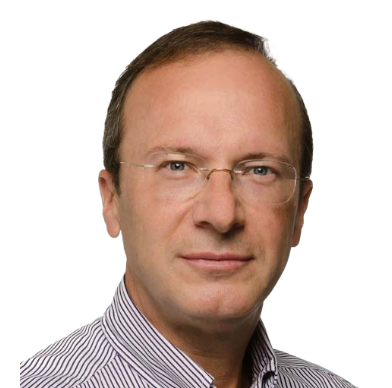
Computer Graphics
Explore our Research Topics
|

Craig Gotsman |
Research Areas: Computer graphics, geometric modeling, geometry processing, computational geometry Distance Computations on 3D Models and General Networks Computing geodesic distances and paths on 3D manifolds is an important problem in geometry processing. Existing approximate algorithms may efficiently compute an entire “distance field” from a single point on the manifold, but computing arbitrary point-to-point geodesic distances efficiently is difficult. Our work takes advantage of an efficient (pre- processed) hierarchical subdivision of a discrete 3D mesh, when treated as a graph, based on compact and balanced cuts, to devise an efficient “divide and conquer” online algorithm to answer these queries very quickly. Our basic methodology is generalized in a number of ways: 1) To compute lower-bound heuristics for shortest-path distances on road networks, which enables efficient shortest-path computation with the A* algorithm. 2) To efficiently approximate resistance distances on social networks. 3) To perform compact message routing (using small routing tables) with modest stretch in sparse networks. |
|
|

Przemyslaw Musialski
|
Research Areas: Computer graphics, geometric modeling, geometry processing, computational fabrication Geometric Modeling and Computational Design The traditional separation of design and manufacturing is currently one of the bottlenecks in the product development process leading to multiple expensive feedback loops. Our research aims at developing computational tools that integrate expert knowledge in 3D geometric modeling, physical simulation and smart algorithms in order to facilitate this process, which will become an important factor for success in increasingly competitive digital markets. Computational Fabrication We perform research at the intersection of applied mathematics, computer graphics and computational design. We investigate problems in geometric modeling and geometry processing, shape analysis and synthesis, as well as physical modeling and simulation with the goal of developing novel algorithmic solutions for the rapidly-growing domain of digital fabrication. Our research aims to provide novel solutions for the future design and manufacturing market.
|
|
|

Tomer Weiss |
Research Areas: Machine learning, data driven, optimization, simulation, crowd dynamics, deep learning, reinforcement learning Computational Design of Virtual and Real Worlds Virtual worlds are growing in complexity and interactivity and are challenging to construct efficiently and realistically. Interior scenes are an intrinsic part of virtual worlds. They are also needed for non-interactive applications, such as furniture marketing, residential showcasing and other commercial applications. Unfortunately, most of the aesthetic and creative process of designing interiors, real or virtual, is manual. To accelerate this process, we utilize machine learning and computer vision to develop several computational interior design tools. Our research assists users by providing suggestions on which furniture to pick, how well itmatches the room’s current style and where to place it. Hence, we can facilitate content creation needs for multiple industries and, most importantly, accommodate our common human needs to create our own optimal interior environment. Simulating the Motion of Multi-Agent Crowds Crowd simulation is an essential part of multiple domains, from interactive media systems, to pedestrian analysis in evacuation scenarios and urban planning, to autonomous multi- agent path planning and coordination. A crowd is a collection of independent, self-actuated agents, where each agent has individual navigational goals in this shared environment. Agent movement is controlled by a navigation algorithm, which needs to ensure that an agent progresses towards its goal while avoiding collisions. Computing collision-free agent motion is difficult, due to the complexity of such dynamic interactions. Despite more than 30 years in crowd simulation research, simulation methods have subspecialized and are computationally effective for either sparse or dense crowds but not for both. Our work is the first method that allows real-time simulation of both dense and sparse crowds for up to 100,000 agents. This result is made possible by reframing agent motion as a constrained mathematical optimization problem that can be solved effectively on modern GPU computer hardware. Aside from the immediate practical implications for the gaming and visual effects industry, these results inspire future research on large-scale pedestrian dynamics which can affect urban and space planning. |
|